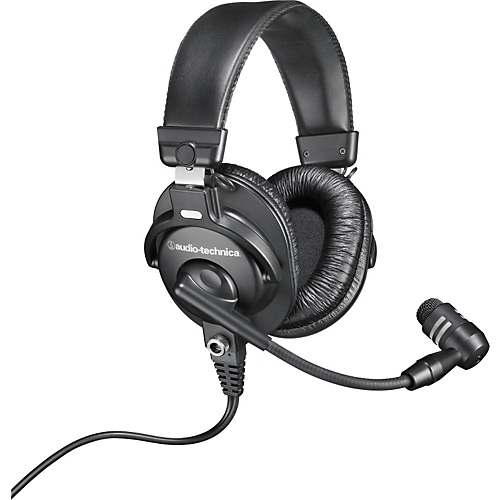
So I had a successful Kickstarter campaign and had a lot of people to thank. I also had a lot of rewards to coordinate and send out (to understand how I made it all happen, read here).
But, once the money has been deposited in your account, what next? The job is certainly not over. Instead it become primetime to execute. 1. Buy the Gear This was fun. Honestly, the arrival of new microphones were more exciting than Christmas this year. Is that lame?
Audio-Technica BPHS1 Broadcast Stereo Headset with Dynamic Boom Mic
One thing I’ve noticed in my interviews is that guests are often not accustomed to talking into a microphone and tense up when they hold a mic. This headset will relieve my guests of worrying about making sure their mic is the right distance from their mouth. Bonus: Folks like me who talk with their hands get free reign. 2. Start a Newsletter Despite the proliferation of social media, only Facebook has reached ubiquitous adoption. I share some of my most popular posts and podcasts there, but I don’t get the maximum reach. So how do I make sure I’m engaging with my listeners and readers on a regular basis? The one messaging platform everyone uses. Email. Now, I know that I’m not alone in the fight to Inbox Zero, and I don’t want to barrage people with emails. So, I’m launching a monthly newsletter to summarize the finest things from the internet. It will serve as an extension of the digital content curation I’m already doing and distill it down to only the highest-caliber videos, links, podcast episodes, and gear. A majority of my Kickstarter backers already signed up and provided valuable feedback on what they wanted to see. I would have never tried this is I wasn’t able to survey my backers as part of the fulfillment process. If you want to join in, just drop your email below.
3. Start soliciting more sponsors
My top rewards for my Kickstarter campaign offered sponsorship opportunities for episodes of my podcast. I’ve already released episodes sponsored by the Ultimate Athlete Project, and I’m currently working with the other companies to write copy and record the sponsor spots. Seeing four organizations interested in sponsoring helped move up my timeline to find other sponsors for the show. I’ll be adding a “Sponsors and Partners” page to help move the show and blog closer to financial sustainability. This would have never happened if it hadn’t been for the Kickstarter campaign. 4. Fulfill the Rewards This has been a (tiring) blast so far. I am prioritizing my largest backers and working my way down. It’s been a larger job than I anticipated. Trips to the post office to mail t-shirts around the country and scheduling coffee dates is nearly a full-time job in itself. Luckily, I’m more than halfway done and should have everything wrapped up by the end of January. The coolest part has been getting coffee with backers and learning more about what they are doing. That was the motivation behind the podcast and continues to be my favorite thing to do. Takeaways I learned so much through every step of the process of running my campaign. I’d urge anyone with a project or business idea to try their hand at running a campaign. I guarantee you will grow in ways neither of us can predict. Be ready to put in the work and bring your creativity.
I did not break any records when I hit my Kickstarter’s goal, but I did hit it in three days.
Below, I’m going to outline three keys to my success that I would give to someone considering their own crowdfunding campaign. In preparation for my campaign, I read the book Bold by Peter Diamandis, which has a whole chapter outlining how to crowdfund a project. Diamandis stresses the importance of how you communicate the purpose of your campaign to your potential backers. He cites multiple examples of successful campaigns and interviewed people who have made it happen. There are also a multitude of “Kickstarter gurus” who offer their services to improve the quality of your campaign. While you may not have a budget to hire one, they often have blogs and YouTube videos that outline their basic keys for success. 1. Prep your backers and tout success A crowdfunding campaign makes or breaks it the first week it is live. It is very uncommon to ignite a late surge that funds a majority of a project’s goal after it has floundered for a few weeks. People like to be part of something successful and join movements that others have already taken part in. This makes it extremely important that you reach at least 25% of your funding goal in the first 3 days. Seem unreasonable? Not with proper preparation. You have to develop a plan for how you will drive traffic to your crowdfunding page early. Obviously, you will post on various social media platforms and tell your friends, but that’s not enough. I emailed more than 80 friends and family members multiple times before my campaign launched thoroughly explaining what I was doing. Most of them watched this video.
Many people emailed back that they wanted to contribute right now, but I simply told them they had to wait a week. While they were frustrated, I knew that I wouldn’t have an issue getting out to a fast start.
Once I launched, the pledges came rushing in. This meant that anyone who saw it through my post on social media came to a campaign that was already significantly supported. This social proof increased the likelihood of them joining in, too. Later on, I made sure to update both supporters and potential backers on how well the campaign was going. Even if this only inspired people to look around, they were still interacting with me, my podcast, and my brand. 2. Build a great page You will not be successful if you start your crowdfunding page and publish all in one day. Diamandis suggests at least a month of prep before your campaign launches. While that length is more important for folks with goals exceeding $20,000, I prepped for a little over two weeks. What does preparation for a crowdfunding page look like? First, you have to make a video for your page. Kickstarter’s blog has a great explanation on how and why to make a video. Their data set shows that your chances of success nearly double with a video on your page. Additionally, it allows you to clearly articulate why you are trying to raise the money. My friend Adam Haritan helped me shoot and edit the videos for the campaign. They don’t need to be Hollywood standard videos- production and passion are more important. Clear communication is essential for a crowdfunding campaign as well. Your page should very clearly explain what the money will be going towards. It should also be apparent in your budget that you are only asking for the minimum amount you need to succeed. Not only does a lower goal increase your probability of success, but it also makes it feel more attainable to your audience. 3. Smart and strategic rewards Every campaign should have clear and valuable rewards. Reward levels will vary by project, but everyone should have something at the $1, $25, and $70 level. These are the most common levels of contribution and will get the maximum number of backers behind you. Offer bigger rewards if you have something to offer that is worth such a donation. Make sure you account for the cost of producing your rewards into the goal. I gave t-shirts to everyone who contributed more than $25, and each shirt cost about $10 to produce. You don’t have to give a physical product at every pledge level either. I offered my time for anyone who contributed over $70. Both experiences taught me a lot about pricing physical products and charging an hourly rate. Side note; Follow through and send your rewards. It takes work, but you owe it to your backers. Be reliable. Mini-hack; The rewards also serve to benefit me as well. Every shirt I sent out has my logo on it, which will serve to build my brand. Getting coffee with larger backers has the potential to build both our networks and create new valuable relationships. Final Thoughts All of my advice essentially boils down to making it easy for people to contribute to a worthy cause. Make sure you take the time to say, “Thank you.” Basic manners and empathy are significantly underrated. An email or a phone call is nice, but take it to the next level with a handwritten note. A large portion of crowdfunding campaigns are not successful, but, interestingly, crowdfunders are 50% more effective the second time they try to run a fundraising campaign. So, if you fail, dust yourself off, learn something, and try again. If you liked this, be sure to check out all the people who helped: Liam Rosen, TopScore Joe Marmerstein Kenny Chen Alex Galbraith Squirrel Hill Chiropractic Pitt Ultimate Greeno, who has helped me edit a few episodes of the podcast Dan O’Conner, the very first backer Tyler Kunsa StartNow Pittsburgh Jimmy Leppert, UpCall Ultimate Dan Tremblay Larry Gioia Whiskey with Wes James Park, Los Angeles Aviators Kevin Tang Elizabeth Craig Photography Ryan, CB Insights Karly Schwab Michael Wilson Ryan Richardson Adam Pelleg JoJo Paulson Domasky Alex Thorne Mark Fedorenko Dave & Portie Watson Nathan D Hessington VI Art & Denise Chau A special thank you to my family members who supported me; Aunt Cheryl - You rock! Denny - Thank you, thank you, thank you! Holly - You’re the best Mom & Dad - thank you for your belief in me Ashley - I couldn’t have done any of this without you |
Topics
All
If you want to support this blog, buy your Amazon products through this link.
Archives
August 2020
|


 RSS Feed
RSS Feed
